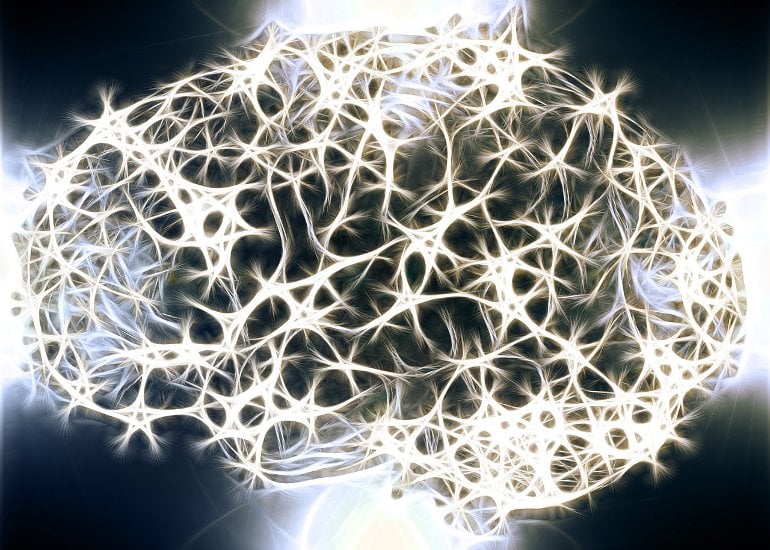Summary: COVID-19 infection causes microglia to excessively engulf synaptic structures and the upregulation of factors involved in phagocytosis.
Source: Karolinska Institute
Researchers at Karolinska Institutet have in a new study used cellular reprogramming to create human three-dimensional brain models and infected these models with SARS-CoV-2.
In infected models, the brain immune cells excessively eliminated synapses and acquired a gene expression pattern mimicking what has been observed in neurodegenerative disorders.
The findings could help to identify new treatments against persistent cognitive symptoms after a COVID-19 infection.
Multiple studies have reported persistent cognitive symptoms after a COVID-19 infection but the underlying mechanisms for this remains unknown.
The researchers behind the study, published as an Immediate Communication in the journal Molecular Psychiatry, have from human induced pluripotent stem (iPS) cells created three-dimensional models of the brain in a dish—so-called brain organoids.
The model differs from previous organoid models as the researchers also included the brain immune cells—microglia—in the model.
In the infected models, microglia excessively engulfed synaptic structures and displayed upregulation of factors involved in phagocytosis. The developed model and the findings in the study could help to guide future efforts to target cognitive symptoms in the aftermath of COVID-19 and other neuroinvasive viral infections.
Cognitive deficits after the infection
“Interestingly, our results to a large extent mimic what has recently been observed in mouse models infected with other neuroinvasive RNA viruses such as the West Nile virus. These viruses are also linked to residual cognitive deficits after the infection, and a persisting activation of microglia leading to an excessive engulfment of synapses, which has been suggested to drive these symptoms.

“Multiple studies have now also reported remaining cognitive symptoms after a COVID-19 infection, as well as an increased risk of receiving a diagnosis of a disorder characterized by cognitive symptoms,” says co-first author of the study Samudyata, postdoctoral fellow in Sellgren lab at the Department of Physiology and Pharmacology at Karolinska Institutet.
Connections to Parkinson’s and Alzheimer’s disease
Microglia are the resident immune cells of the brain but also carries out important regulatory functions of the neuronal circuitries in the developing and adult brain. One of these crucial functions is to engulf unwanted synapses, a process that is believed to improve and maintain cognitive functions.
However, excessive engulfment of synapses has been linked to both neurodevelopmental disorders, such as schizophrenia, as well as to neurodegenerative disorders including Alzheimer’s disease.
By sequencing genes in single cells, the authors could also study how different cell types in the model responded to the virus.
“Microglia displayed a distinct gene signature largely characterized by an upregulation of interferon-responsive genes, and included pathways previously linked to neurodegenerative disorders such as Parkinson’s and Alzheimer’s disease.
“This signature was also observed at a later time-point when the virus load was minimal,” says co-author of the study Susmita Malwade, doctoral student in Sellgren lab at the Department of Physiology and Pharmacology at Karolinska Institutet.
The researchers will now study how different pharmacological approaches can reverse the observed changes in the infected models.
About this neuroscience and COVID-19 research news
Author: Press Office
Source: Karolinska Institute
Contact: Press Office – Karolinska Institute
Image: The image is in the public domain
Original Research: Open access.
“SARS-CoV-2 promotes microglial synapse elimination in human brain organoids” by Samudyata et al. Molecular Psychiatry
Abstract
SARS-CoV-2 promotes microglial synapse elimination in human brain organoids
Neuropsychiatric manifestations are common in both the acute and post-acute phase of SARS-CoV-2 infection, but the mechanisms of these effects are unknown.
In a newly established brain organoid model with innately developing microglia, we demonstrate that SARS-CoV-2 infection initiate neuronal cell death and cause a loss of post-synaptic termini.
Despite limited neurotropism and a decelerating viral replication, we observe a threefold increase in microglial engulfment of postsynaptic termini after SARS-CoV-2 exposure.
We define the microglial responses to SARS-CoV-2 infection by single cell transcriptomic profiling and observe an upregulation of interferon-responsive genes as well as genes promoting migration and synapse engulfment.
To a large extent, SARS-CoV-2 exposed microglia adopt a transcriptomic profile overlapping with neurodegenerative disorders that display an early synapse loss as well as an increased incident risk after a SARS-CoV-2 infection.
Our results reveal that brain organoids infected with SARS-CoV-2 display disruption in circuit integrity via microglia-mediated synapse elimination and identifies a potential novel mechanism contributing to cognitive impairments in patients recovering from COVID-19.







